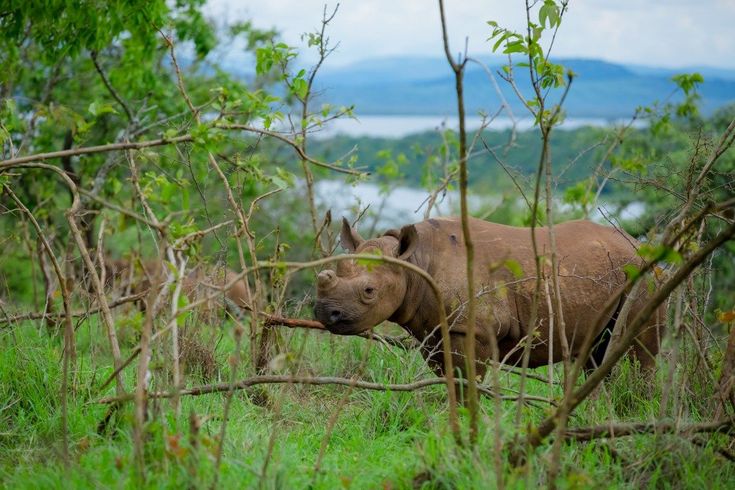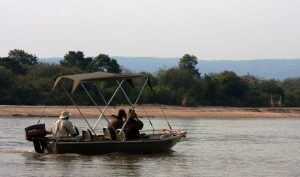When planning a safari in East Africa, Rwanda may not be the first destination that comes to mind for savannah landscapes. Most travelers associate the country with mountain gorillas and misty forests. However, Rwanda is home to a remarkable and often overlooked gem Akagera National Park, a protected area that offers a true African savannah experience. But is Akagera truly a savannah park?
The answer is yes Akagera National Park is a savannah park, and it is the only one of its kind in Rwanda. Situated in the eastern part of the country along the border with Tanzania, Akagera showcases classic savannah scenery, complete with open plains, acacia-dotted landscapes, large mammals, and an ever-changing sky. This blog post explores what makes Akagera a savannah park, what kind of wildlife and landscapes you can expect, and why it is a must-visit destination for anyone looking to experience Rwanda beyond the mountains.
What Defines a Savannah Park?
To understand why Akagera qualifies as a savannah park, it’s important to know what a savannah ecosystem is. A savannah is typically a mixed landscape of grassland and scattered trees that supports a wide variety of herbivores and predators. These ecosystems are commonly found in regions with a distinct wet and dry season, such as East Africa. Savannah parks are famous for their open visibility, dramatic wildlife encounters, and incredible photographic opportunities.
Akagera National Park fits this definition perfectly. It includes extensive areas of open plains, tall grasses, and gently rolling hills punctuated by acacia and fig trees. These landscapes provide the ideal habitat for many of the continent’s most iconic wildlife species.
Where Is Akagera National Park Located?
Akagera National Park lies in northeastern Rwanda, bordering Tanzania. Covering approximately 1,122 square kilometers, it is Rwanda’s largest national park. The park gets its name from the Kagera River, which flows along its eastern boundary and feeds into a network of lakes and swamps.
This area is part of the East African Rift Valley, and its position contributes to the variety of habitats within the park. While Akagera is primarily a savannah park, it also contains:
-
Papyrus swamps
-
Wetlands
-
Woodland forests
-
Scattered lakes, such as Lake Ihema and Lake Rwanyakizinga
This unique combination makes Akagera one of the most biodiverse protected areas in East Africa.
What Kind of Savannah Landscapes Will You See in Akagera?
The majority of Akagera’s landscape features the classic traits of East African savannah:
-
Vast grasslands that stretch across gently sloping terrain
-
Open plains ideal for viewing large herbivores
-
Scattered trees, especially thorny acacias and fig trees
-
Low-lying bushes that provide cover for predators like lions and leopards
-
Burnt grass patches during the dry season, part of the natural fire cycle
These landscapes are similar to what you might find in Tanzania’s Serengeti or Kenya’s Maasai Mara, albeit on a smaller and more intimate scale.
What Wildlife Can You Expect in Akagera’s Savannah?
One of the most compelling reasons to visit a savannah park is for big game viewing, and Akagera does not disappoint. Over the last decade, Akagera has undergone a remarkable conservation transformation, restoring its wildlife populations and bringing back species that were once extinct in the area.
Here’s a look at the major wildlife species found in Akagera’s savannah:
-
Lions – Reintroduced in 2015, they now roam freely across the park
-
Leopards – Elusive but present, especially in woodland-savannah areas
-
Elephants – Commonly seen grazing in the open grasslands or near water
-
Buffaloes – Found in large herds, often in the southern plains
-
Rhinos – Both black and white rhinos have been reintroduced in recent years
Other Savannah Species
-
Giraffes
-
Zebras
-
Topis
-
Waterbucks
-
Warthogs
-
Impalas
-
Elands
-
Baboons and vervet monkeys
-
Over 500 bird species have been recorded in Akagera
-
Includes savannah species like the African fish eagle, helmeted guineafowl, and various raptors
This level of diversity makes Akagera one of the best parks for traditional game drives, a hallmark of the East African safari experience.
Is Akagera Suitable for Traditional Savannah Safaris?
Absolutely. Akagera National Park offers all the classic features of a traditional savannah safari, including:
-
Morning and evening game drives
-
Night drives to spot nocturnal predators
-
Guided walks in designated areas
-
Camping and luxury lodge stays
Unlike forest treks in Volcanoes National Park or Nyungwe, which require hiking and have age or fitness restrictions, Akagera’s savannah safaris are accessible and suitable for all ages, including families with young children.
You can explore the park in 4×4 vehicles led by expert guides who understand the terrain and animal behavior, making the experience both safe and educational.
What Is the Best Time to Visit Akagera’s Savannah?
Akagera National Park can be visited year-round, but the dry seasons are generally considered the best time for wildlife viewing:
-
Long dry season: June to September
-
Short dry season: December to February
During these months, animals tend to gather around water sources, making them easier to spot. The grass is also shorter, which improves visibility. That said, the wet season brings its own beauty with lush greenery and an abundance of birdlife.
What Makes Akagera Different from Other Savannah Parks?
While Akagera shares similarities with larger savannah parks in Kenya and Tanzania, it offers some unique advantages:
-
Crowd-Free Experience
Unlike the heavily visited Maasai Mara or Serengeti, Akagera is still relatively under the radar. You can enjoy serene game drives without the pressure of competing vehicles. -
Conservation Success Story
Akagera’s revival, led by the partnership between the Rwanda Development Board and African Parks, is one of Africa’s most inspiring conservation stories. From reintroducing lions and rhinos to managing poaching and community engagement, the park serves as a model for sustainable tourism. -
Compact and Accessible
Located just 2.5 hours from Kigali by road, Akagera is the most accessible savannah park in the region. This makes it an ideal addition to a gorilla trekking itinerary or a short safari holiday. -
Diverse Habitats in One Park
While predominantly savannah, Akagera also features lakes, swamps, and forests—all within one park. This ecological diversity enriches the overall safari experience.
Akagera Is Rwanda’s Savannah Heartland
So, is Akagera National Park a savannah park? Yes, without a doubt. It is Rwanda’s only savannah national park and offers everything you would expect from such a landscape—open plains, big game, classic safari drives, and a wide range of animal sightings.
Akagera is a shining example of how conservation, community involvement, and tourism can come together to revive and sustain a unique ecosystem. For travelers seeking a classic African safari in a lesser-known but deeply rewarding setting, Akagera delivers in every way.
Whether you’re a first-time safari-goer or a seasoned wildlife enthusiast, Akagera’s sweeping savannah landscapes, thrilling wildlife encounters, and peaceful surroundings will leave you with a deep appreciation for Rwanda’s natural beauty beyond the mountains.




